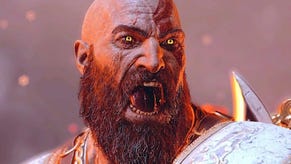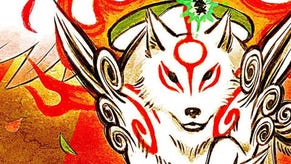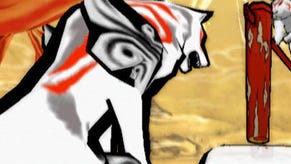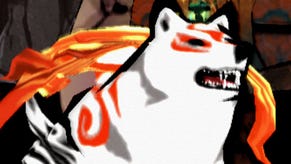Okami
Don't give it the brush off.
Where the control system works best is when you're called upon use Amaterasu's Celestial powers. The basic idea is that you literally paint the actions you want to perform on the screen. Used as a means of both solving puzzles and helping you perform powerful attacks upon your many enemies, the action pauses momentarily and the screen drains of colour while you draw a particular shape that corresponds to the special command you want to perform. On the PS2, this was a rather slow, methodical process that you pulled off with the analogue stick. Needless to say, the Wii's motion sensing prowess lends itself perfectly to this whole process of brush stroke gesticulation, and as a result you'll find it extremely intuitive to Power Slash enemies with precision, or draw specific shapes when the game demands it.
Early on, this extends to little more than painting in areas that require your Rejuvenation ability, drawing circles to invoke a sunrise to certain areas, or likewise using Bloom to bring flora and fauna back to life by encircling the area required. Later, more complex squiggles become part of your arsenal, but by then you'll have become rather more adept and precise with your efforts through repetition. Admittedly it does take a little bit of getting used to, but the game is forgiving enough to read your intentions even when your so-called circle looks nothing like one.
In terms of gesture-based controls, the conversion process is slightly less satisfying, and feels every bit as tacked-on as some of the motions in Twilight Princess. You initially have access to basic actions - that of swinging the remote to drive Amaterasu forward to attack or break pots/open chests and so on, while gesturing and jumping pulls off a mid-air attack. As you unlock moves like Fleet Foot, other gesturing also comes into play, allowing you to dash in the direction you flick the nunchuk, but sadly you'll probably find the whole process rather inexact and prone to misreading your input. Even basic attacks feel unresponsive, with very deliberate movements required at specific intervals in order to get the most out of the move set available to you. Again, as with the use of the Celestial Brush, adapting to what the game wants from you involves a bit of a learning curve, but it's not particularly off-putting. It would have perhaps been wise to offer players the choice of assigning attacks to buttons rather than requiring exclusive use of gesture-based controls, but then again, it's hard to know where they could have been mapped.

Elsewhere, one of the subtler things you notice in a side-by-side analysis is the slightly cleaner look of the visuals. Some of this is evidently down to the fact the game now runs in 480p widescreen, but some may also notice the wonderful parchment texture effect on the PS2 is now far less prominent. It's not a tragic loss by any means given the brighter, crisper look and feel of the new version, but some might consider it a small negative on an otherwise creditable port. In terms of content, the games are absolutely identical, so it's safe to say if you've been holding out for the Wii version you won't be disappointed in any way.
With the European version still looking like it's a few months away from release, there are a few options available to you. Either hold out for the inevitable localisation process and get the PAL version in a few months, pick it up on the cheap on PS2, or grab it from your favourite importer now. Whatever you decide though, on the evidence of our few hours with the latest build, Okami is as essential as it ever was.
Okami is due for release by Capcom on the Nintendo Wii in June across Europe. Alternatively, pick it up from all good importers next week.





